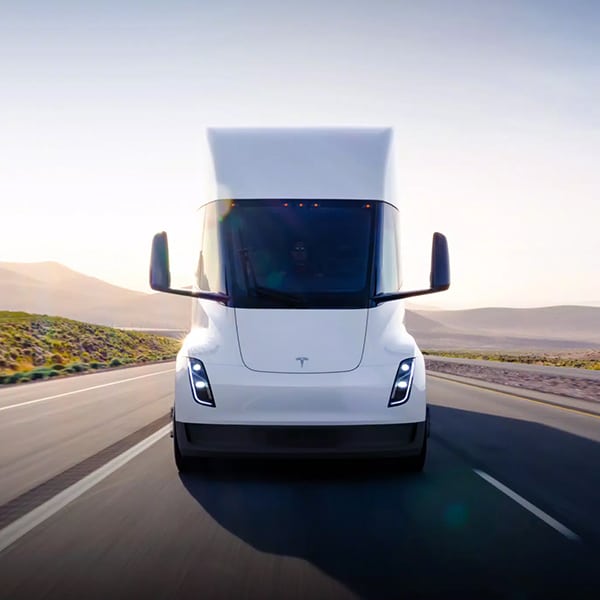Public chargers for electric trucks will need to be provided at regular intervals along Europe’s primary and secondary motorways, and in major cities, under a new law agreed by MEPs and governments.
Transport & Environment (T&E) said the Alternative Fuel Infrastructure Regulation (AFIR) removes a key obstacle to the EU setting more ambitious CO2 targets for trucks by ensuring there will be adequate public charging. The law also requires charging infrastructure for cars to keep pace with the number of EVs in each EU country.
By 2030, governments must provide at least 3,600 kW of truck charging capacity every 60 km along the EU’s primary motorways. On secondary motorways, at least 1,500 kW of truck charging capacity will need to be available every 100 km. By that year, charging hubs must be available in every major city, and there will need to be four charging stations in each designated ‘safe and secure truck parking area’.
T&E said the requirements mean there will be enough public charging to significantly increase the EU’s proposed CO2 reduction target in 2030 – which is key to driving the uptake of electric trucks. The EU Commission has proposed only a 45% cut in CO2 from new trucks sold in 2030, but the European Parliament and governments can increase that before the truck climate rules are finalised. The law requires enough hydrogen refuelling stations for the anticipated fleet of hydrogen trucks.
Advertisement
Fabian Sperka, vehicles policy manager at T&E, said: “Charging is often cited as the big obstacle to a faster roll-out of zero emissions trucks, but lawmakers have now removed that roadblock. The EU’s charging law unlocks more ambitious climate targets for truckmakers, which will in turn green European road freight. MEPs and governments can ramp up CO2 targets for trucks with confidence that there will be plenty of charging available.”
For cars, new fleet-based targets mean that public charging infrastructure will need to expand in line with the uptake of electric vehicles. All main motorways will need to have a charging hub every 60 km by 2025, and this requirement will be extended to all secondary highways by 2030. All fast charging stations in the EU will need to accept bank cards for payments.
Fabian Sperka said: “Charging anxiety will become a thing of the past. Governments will be legally required to ramp up infrastructure as electric car sales grow. Electric car drivers will be able to pay with a bank card anywhere in Europe. It will be as easy to charge an EV in Romania as to fill up the tank in Germany today.”
In shipping, European ports will, for the first time, be required to make shore-side electricity available for container and passenger ships from 2030, helping to cut air pollution in port cities. EU countries will also now be required to report their plans for green bunkering points, including electricity, hydrogen, methanol and ammonia refuelling infrastructure, in their ports. This provides crucial information for shipping companies investing in ships that run on clean fuels, said T&E. The deal follows the adoption of the world’s first green shipping fuel requirement in EU law.
The final AFIR law needs to be rubberstamped by EU governments and the European Parliament before entering into force.












